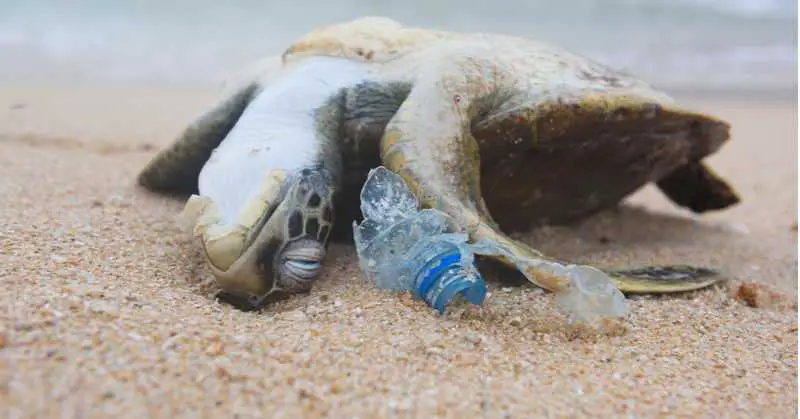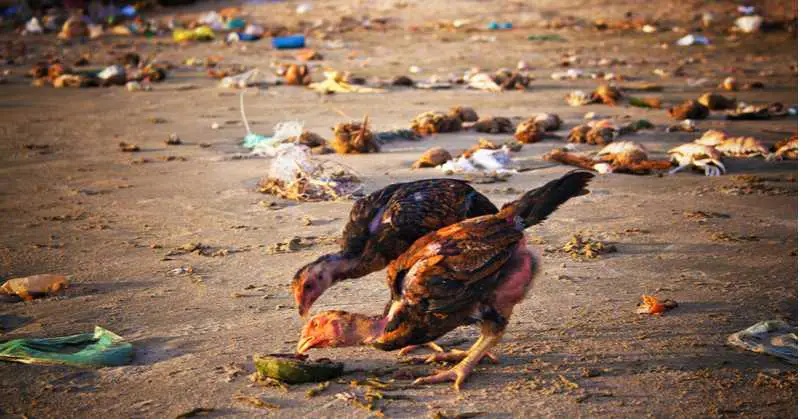
There are 10 rivers in the world that carry 93% of trash into the world’s oceans. “The Yangtze, Yellow, Hai, Pearl, Amur, Mekong, Indus and Ganges Delta in Asia, and the Niger and Nile in Africa. The Yangtze alone dumps up to an estimated 1.5 million metric tons of plastic waste into the Yellow Sea.” 1
According to reporting by The Independent, after the Chinese government introduced measures to stop the dumping of garbage into rivers, “the amount of plastic polluting China’s coastal waters has soared…more than 200 million cubic metres of waste was found floating off Chinese shores [in 2018], up 27 percent on 2017, according to the environment ministry.” 2 This is not new. “Environmental groups have previously expressed concern that China, desperate to clean up its own rivers, is dumping increasing amounts of trash in its seas instead.” 2
A team of Chinese researchers from Tianjin University’s Center for Marine Environmental Ecology observed, “As one of the rapidly growing economies, China is the topmost contributor of plastic waste in the world. China’s massive impact on the plastic levels of the ocean are a definite cause of concern and is developing multiple economic, environmental and biological complications.” 3 The researchers conclude, “Microplastics are increasingly being detected and quantified in Chinese coastal environments and legislation for containment of such pollution is highly recommended.” 3

The story of plastic waste and China is complex. Historical trends show that wealthier nations sent plastic waste to low- or middle-income countries with cheaper processing fees and less-developed waste management infrastructure. In the early 1990s, China’s emerging markets managed to profit from manufacturing goods with recycled plastics. Between 1992 and 2017 China’s recycling industry grew to import approximately 45% of the world’s plastic waste, with the US contributing over 500,000 million metric tons to China. Beginning in 2013, an operation known as “Green Fence” was implemented as China introduced restrictions on contaminated plastics to increase the quality of plastic imports which significantly slowed the import of plastic waste and finally in 2017, China permanently banned the import of nonindustrial plastic waste. 4
As China struggles to develop an infrastructure to keep up with the sheer magnitude of managing its own plastic waste, it is estimated that between 1.3 – 3.5 million metric tons of plastic enter the ocean along its coast annually. 4
A team of international researchers from the US and Australia combined “available data on solid waste with a model that uses population density and economic status to estimate the amount of land-based plastic waste entering the ocean.” 5 As the abbreviated table below shows, China far and away led the waste estimates for the top 20 countries ranked by mass of mismanaged plastic waste that ends up as plastic marine debris: 5
Rank Country Coastal Population Plastic Marine Debris
1 China 262.9 Million 1.32-3.53 Millions Metric Tons
2 Indonesia 187.2 Million 0.48-1.29 Millions Metric Tons
3 Philippines 83.4 Million 0.28-0.75 Millions Metric Tons
4 Vietnam 55.9 Million 0.28-0.73 Millions Metric Tons
20 US 112.9 Million 0.04-0.11 Millions Metric Tons
Source: Jambeck et al. Science, 20155
Put another way, “roughly 60% of all the plastic in global waters originates in five countries: China, the Philippines, Thailand, Indonesia, and Vietnam.” 6
Chen Liwen, a Chinese environmentalist and founder of Zero Waste Village, was quoted with this reaction to the findings shown above, “Plastic waste that has no value for recycling is either burned directly or dumped in waterways and eventually ends up in the sea. This is very common in China’s rural areas, where there is no waste management in place.” 7
The film trailer for “Beijing Besieged by Waste” by filmmaker Wang Jiu-liang below gives some sense of the source for the plastic waste that finds itself in the ocean from that country. One film festival describes the film this way, “In recent years, Beijing has experienced explosive economic growth, which has led to a massive boom in population, construction projects unprecedented in scale… and, in turn, a tremendous swell in the amount of garbage the city produces. Photographer and director Wang Jiu-liang spent two years fearlessly documenting Beijing’s unholy cycle of consumption and waste… Putrid rivers. Mounds of tar-black silt residue from sewage treatment plants. Sheep grazing on hills of trash, the sky behind them thick with new concrete high-rises and towering construction cranes…Few solutions are on offer, but merely exposing the horrors serves as a call to act before Beijing, then China, then the entire planet, is swallowed by garbage.” 8
Film trailer, “Beijing Besieged by Waste” by filmmaker Wang Jiu-liang.
The problem, of course, is not China’s alone. It is estimated that 8.3 billion metric tons of plastic have been produced worldwide between 1950 and 2017. Of that total, “only 9% of plastic waste has been recycled globally, with the overwhelming majority of global plastic waste being landfilled or ending up contaminating the environment (80%), resulting in an estimated 4 million to 12 million metric tons of waste plastic entering the oceans annually.” 4 It is thought that the remaining plastic waste has been incinerated. 9
According to The Independent, “China is planning to make about 30 percent of its coastal waters completely off-limits to development as part of a national ‘ecological red line’ scheme. But it is also trying to protect its rivers and improve the environment of its cities by moving polluting industries like steel and petrochemicals to the coast.” 2
We will have to wait to see if it has any beneficial impact. Once, on the occasion of the 10th anniversary of an international environmental congress, Chuanlin Huo, Deputy Director-General of China’s Ministry of Ecology and Environment, invoked a Chinese saying: “It takes ten years to sharpen a sword.” 10
References
1Patel P. Stemming the Plastic Tide: 10 Rivers Contribute Most of the Plastic in the Oceans. Scientific American. 1 February 2018. https://www.scientificamerican.com/article/stemming-the-plastic-tide-10-rivers-contribute-most-of-the-plastic-in-the-oceans/
2Baynes C. Plastic Pollution Off China’s Coast Soars After Drive to Stop Dumping It in Rivers.” The Independent. 29 October 2019. https://www.independent.co.uk/environment/plastic-pollution-china-sea-waste-rivers-yangtze-pearl-environment-a9176286.html?fbclid=IwAR23_wHIZGehRJnGwaJYKlXvJkuu7zGl745SYN9SbmTjE1SeUKqS2KZ92BY
3Wang MH, He Y, Sen B. Research and management of plastic pollution in coastal environments of China. Environmental Pollution. 2019 May;248:898-905. https://www.sciencedirect.com/science/article/pii/S0269749118348929
4Brooks AL, Wang S, Jambeck JR. The Chinese import ban and its impact on global plastic waste trade. Science Advances. 2018 Jun 20;4(6):eaat0131. https://www.ncbi.nlm.nih.gov/pmc/articles/PMC6010324/
5Jambeck JR et al. Marine pollution. Plastic waste inputs from land into the ocean. Science.2015 Feb 13;347(6223):768-71. https://science.sciencemag.org/content/347/6223/768.long
6Narula SK. More than Half the Plastic in the Ocean Comes from These Five Countries. Quartz. 15 January 2016. https://qz.com/595673/more-than-half-the-plastic-in-the-ocean-comes-from-these-five-countries/
7Jing L. China Produces About a Third of Plastic Waste Polluting the World’s Oceans, Says Report. South China Morning Post. 13 February 2015. https://www.scmp.com/article/1711744/china-produces-about-third-plastic-waste-polluting-worlds-oceans-says-report
8Hoglund, Joel. Wasting Away. Abu Dhabi Film Fund. 18 October 2011. http://www.sanadfilmfund.com/en/archive/2011/2011-10-18-Wasting-Away
9Geyer R, Jambeck JR, Law KL. Production, use, and fate of all plastics ever made. Science Advances. 2017 Jul 19;3(7):e1700782. https://www.ncbi.nlm.nih.gov/pmc/articles/PMC5517107/
10Monaco Blue Initiative. Special Issue on Marine Protected Areas: Summaries & Recommendations. 10th Edition. March 2019. https://www.oceano.org/wp-content/uploads/2019/08/SUMMARIES_MBI_2019_Final.pdf (p. 51)
Video. Wang Jiu-liang, Photographer & Director. “Beijing Besieged by Waste.” Trailer. 28 September 2011. https://www.youtube.com/watch?v=juJLxiVD9nU

This Site Was Inspired By An Interest in Protecting the Environment:
We had the privilege and joy of learning from Dr. Charlie Stine who instilled a love for the natural world through incredible field trips with the Johns Hopkins Odyssey Certificate program in Environmental Studies. At the time, the program was endorsed by the Maryland Department of Natural Resources. Sadly, after Dr. Stine retired, the program was phased out. We hope that we honor his legacy by shining a bright light on environmental issues and sharing good news about the success of various conservation programs when possible.